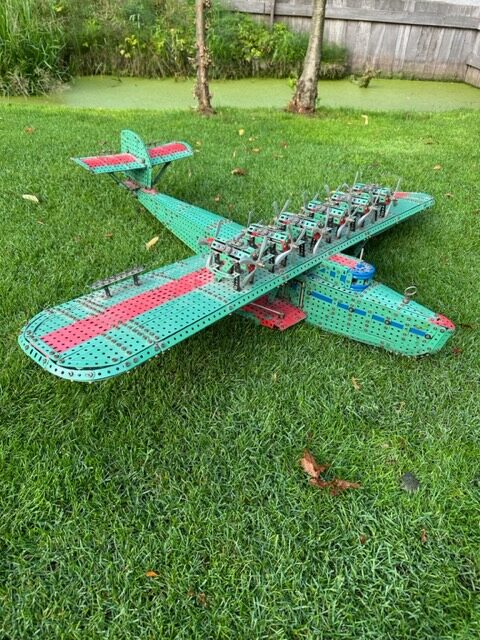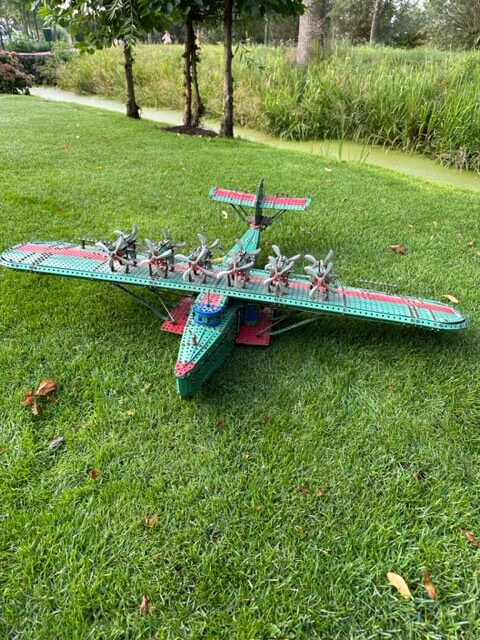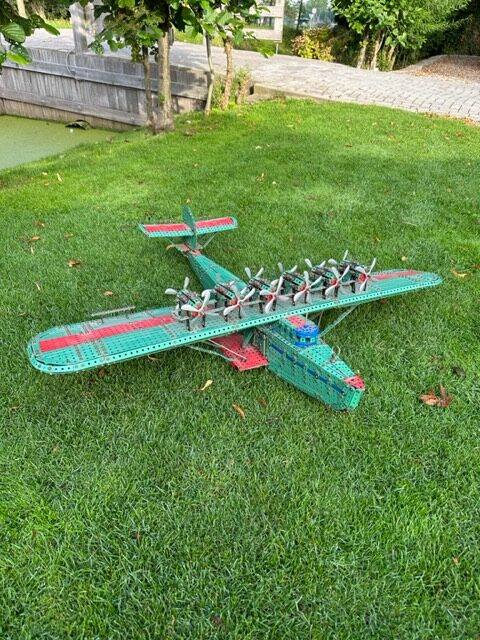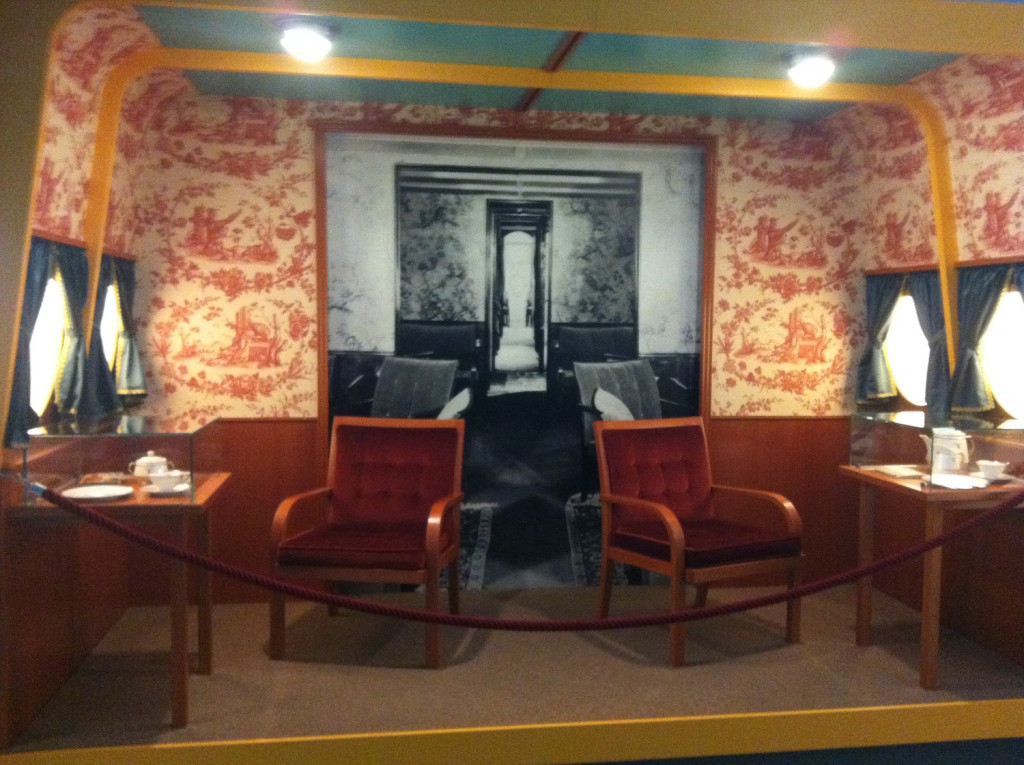A well proportioned Märklin constructor assembled model of a Dornier Do.X., Flying Boat
€ 1.850,00
On November 5, 1930, the Dornier Do X, the largest, heaviest, and most powerful flying boat in the world took off for a demonstration test flight to the Netherlands, England, France, Spain, and Portugal. After a delay due to technical problems, the Do X continued her journey to Cape Verde and Brazil to finally reach New York on August 27, 1931.
Het grootste vliegtuig ter wereld
The Largest Plane in the World
The Do X was a flying boat built as a strutted shoulder-wing with a tailplane in standard arrangement and twelve piston engines mounted in six tandem nacelles above the wing. Each nacelle had one traction and one thrust propeller. The cockpit was located in a deck above the passenger cabin. The aircraft was designed for 159 passengers and 10 crew members. The Flugschiff Dornier Do X was launched for its very first test flight on 12 July 1929, with a crew of 14 and in October of the same year, 169 people joined its 70th test flight on board of which 150 were passengers, ten were aircrew and nine were “stowaways” who did not hold tickets. The flight became famous for setting a new world record for the number of persons carried on a single flight, a record that was not broken for 20 years. It is believed that back in the day, the passengers were asked to crowd together on one side or the other to help make turns. The plane flew for 40 minutes at a maximum speed of 170 km/h before finally landing on Lake Constance. Another milestone flight took place in November 1930 when the Do X took off from Friedrichshafen, Germany under the command of the German seaplane ace Friedrich Christiansen for a transatlantic test flight to New York flying over the Netherlands, England, France, Spain, and Portugal. At the end of November, the journey was interrupted at Lisbon, when a tarpaulin made contact with a hot exhaust pipe and started a fire that consumed most of the portside wing. After six weeks, the journey continued along the Western coast of Africa and reached the islands of Cape Verde by 5 June 1931. From there, it crossed the ocean to Natal in Brazil, where the crew were greeted as heroes by the local German émigré communities. New York was reached on August 27. 1931, nine months after departing Friedrichshafen.












